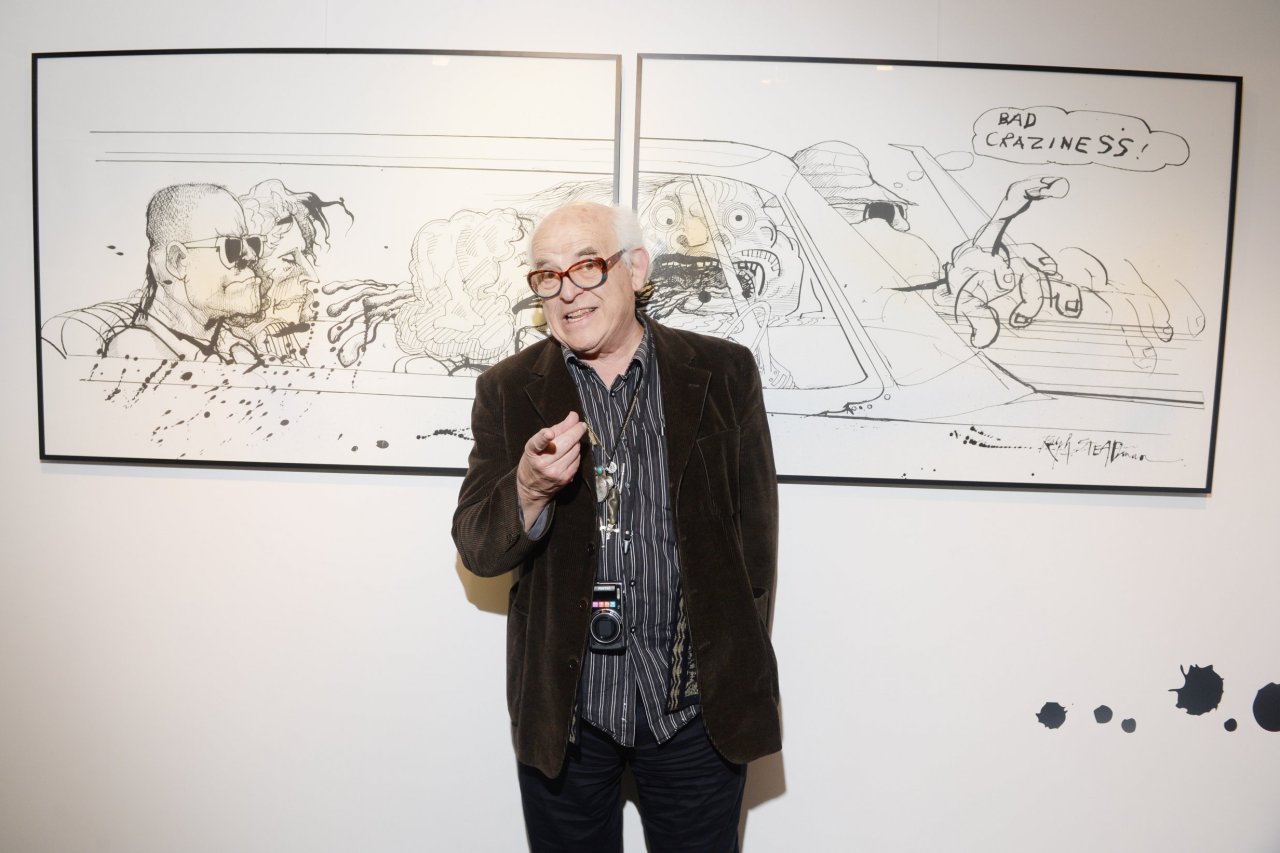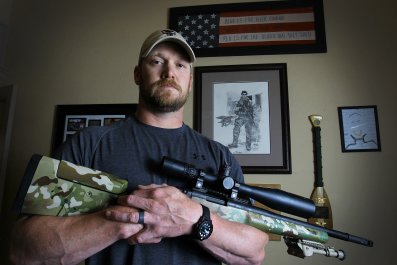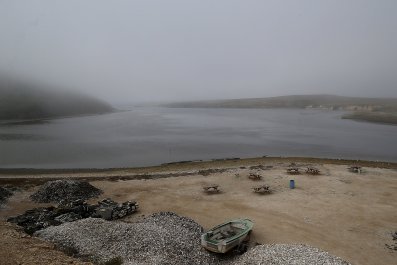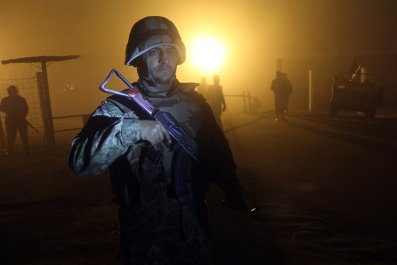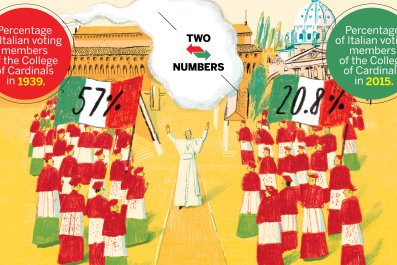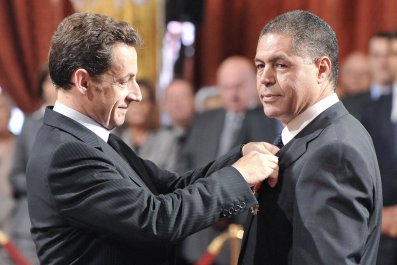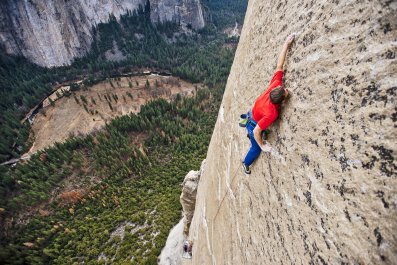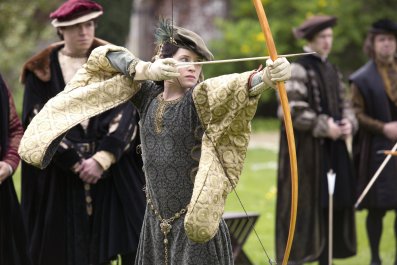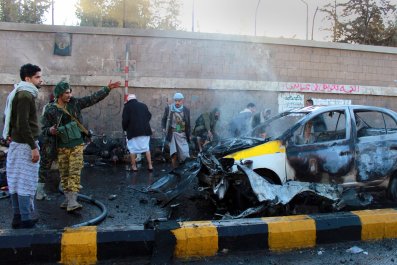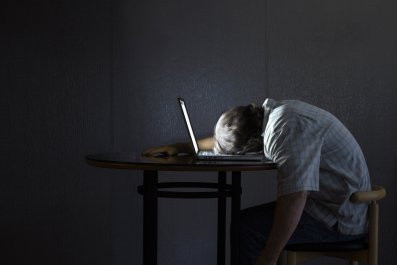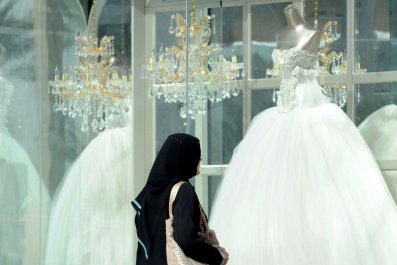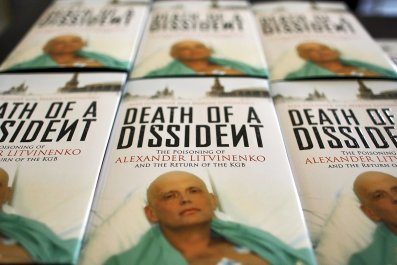We were sitting in a bar in Aspen, Colorado, almost 20 years ago, I remind Ralph Steadman, when he first told me that he'd become a cartoonist because he wanted to change the world. It wasn't the first time he'd made this declaration and it wouldn't be the last. But it's a mission statement that seems horribly apposite this afternoon, as we sit in the living room of his house near Maidstone, Kent, watching live news coverage from the print warehouse where Said and Cherif Kouachi, the killers of the Charlie Hebdo artists, are making their last stand.
"It is interesting that you should mention that remark today," says Steadman, "because, looking at what has been happening in Paris, I now feel that I have succeeded. I did manage to change the world, and it is a worse place than it was when I started. Far worse – an achievement I had always assumed would be impossible."
With the exception of a brief radio interview on the day of the shootings, Steadman had declined to join the throng of commentators jostling to share their opinions on the tragedy. Just as I arrived, he had spurned an invitation from a radio station in Lincoln, Nebraska. "As soon as this thing happened," he says, "the phone started ringing. I don't know why."
"Probably," I tell him, "because people perceive you as precisely the sort of . . ."
". . . bastard who might draw something that would severely displease somebody because they could not see the joke?" the 78-year-old interrupts.
It's more likely that, given his reputation for images of grotesque irreverence, typified by his illustrations for his friend Hunter S Thompson's demented novella Fear and Loathing in Las Vegas, people see him as eminently qualified to assess the splenetic defiance in the work of revered cartoonists like Cabu and Wolinski, who died in the assault. I was with Steadman when he last saw Thompson, a few months before the writer's suicide, which occurred 10 years ago next month and, as I tell the artist, I can remember the intense emotional impact that particular death inflicted on him.
"What was your first reaction when you heard about the attack in Paris?"
"I thought, 'Oh, bloody hell, this cannot possibly be true.' Disbelief. After that, I think I was in shock." Steadman explains that he heard the news from his wife, Anna, when he came in from his daily swim in the outdoor pool behind his house. "And then, as I say, the phone calls started. And I just said to myself, 'I am not going to respond to this now. I've got to let some time pass. I can't start handing down judgment on this yet.' We put the television on, as I guess most people did. We saw the hideous sight of that wounded policeman on the floor."
"Ahmed Merabet: a Muslim."
"Yes. There are so many terrible and perverted dimensions to this affair. Can you imagine if the killers were to walk in here right now? We say, 'Right. Explain why you did this thing.' And they say, 'We felt that we were being ridiculed in France.' When you think about it in rational terms, the whole thing is surreal."
"You would like to imagine that they [the cartoonists] looked in to their faces and laughed," he says. "You would like to think that they died laughing."
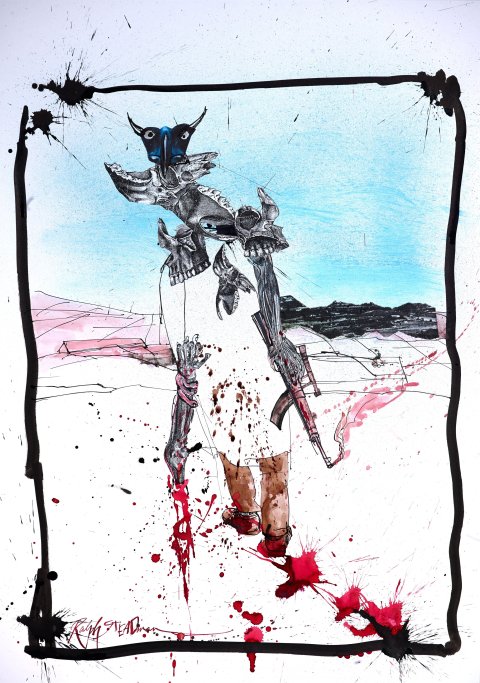
Steadman, as I remind him, is hardly unfamiliar with the power of gross and offensive imagery created with subversive intent. But the caricatures of Allah and Muhammad, I suggest, take any moral debate into rather more complex territory than do, say, his merciless depictions of Richard Nixon, George W Bush, or Tony Blair.
"Obviously there's a long tradition of work in which satire and vulgarity collide," I suggest. "But is it always legitimate to cause offence?" The Charlie Hebdo artist I've had most contact with over the years, I explain, is the 86-year-old anarchist Maurice Sinet, known as Siné, who was fired from the magazine after contributing, in 2008, a column and drawings which had him accused of inciting hatred against Jews; the kind of editorial sanction the paper has not always extended to artists satirising Islam. You hardly need a degree in religious studies to know that depicting the prophet Muhammad as a dog (as the Swedish artist Lars Vilks did, in 2007) will cause most Muslims to take offence and, most would agree, with good reason. Does Steadman ever find himself looking at such images and thinking: what's the point?
"There can come a stage where what you are producing is just irresponsible graffiti. For which – yes – there is no point. But working as . . . I don't often find myself using the phrase 'a responsible satirist' . . . you would seek to produce something that is very funny in some way."
"Which Charlie Hebdo could be."
"Yes," Steadman replies. "It is quite reasonable for a reader to be offended. It's slightly less reasonable to enter an office armed with two Kalashnikovs and a grenade. Most people would regard that as something of an overreaction."
Steadman has an apartment in Paris, not too far from that address. He knew Georges Wolinski, Cabu, and several others of the victims. "It does bring a peculiar focus to these events," I suggest, "when you realise that there is a real, if very remote, possibility that you could have been a guest in the building that day."
"And when you imagine that," Steadman says, in a remark that curiously anticipates an interview which will later be broadcast with Michel Catalano, the owner of the print warehouse who offered the Kouachi brothers coffee, "you find yourself wondering how you would have reacted in those circumstances. What could you possibly say? 'How can I help you? Can I get you a drink? Milk and sugar? Or would you prefer that I served as a target?'"
One of the stranger aspects of the tragedy is the way in which solidarity with Charlie Hebdo, a publication not known for its conservatism or subtlety, has been effusively expressed by the kind of people with whom its staff would have struggled to empathise, among them David Cameron, headline writers for The Sun, and Marine Le Pen, who was once represented by the paper as a pile of faeces.
Ralph Steadman, by contrast, says he struggles to find the kind of language appropriate to describe the events in Paris. "In the case of the killers," he tells me, "it's far easier to find adjectives that are inappropriate. Like 'anodyne'. And 'atheistic'. 'Apathetic'. And 'Anglican'. I'm still on the As. We could go through the whole dictionary'."
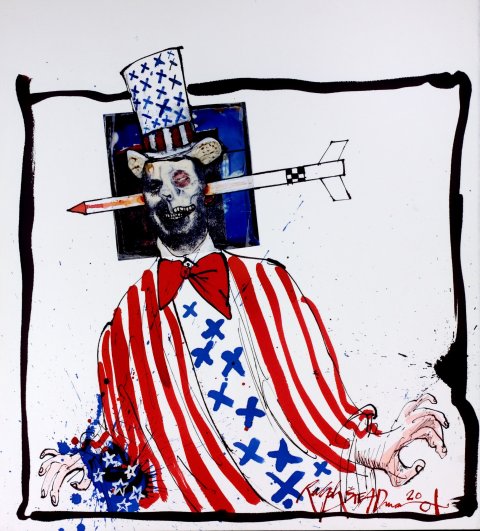
I should probably say that I have never met a more compassionate person than Steadman before mentioning that this last remark, dark as it is, strikes us both as extremely funny. We've been talking for an hour or so and this is not the first time we've found ourselves laughing. I don't know, I tell the artist, what that says about us as people.
"Tragedy provokes different offshoots of thought," he replies. "Even at a wake, you can't keep sitting there saying, 'Oh, it's terrible you know. I feel terrible. Do you feel terrible? You must do, I know, but I can tell that you don't feel anything like as terrible as I do'. As humans we just can't do that."
Some years ago, when we were travelling in Utah, Steadman told me that he feels interviews sometimes risk sounding like posthumous tributes. What adjectives, I asked him, would he like to see in his own obituary?
"Distasteful," he said. "Unhygienic. Truculent. Moody. Provocative towards bastards."
"How about long-lived?"
"Oh, yes. I'd like my obituary to say: 'He was very long-lived. Endlessly. We thought he'd never go away'. A pause. "And we were right: he didn't."
Since then, his painting has continued to resonate with a new, younger audience. He recently completed the artwork for a limited edition Blu-ray release of Vince Gilligan's Breaking Bad, which goes on sale next month. His distinctive labels for Jim Caruso's Flying Dog Brewery have helped turned beers such as "Raging Bitch" into globally recognised brands. And Steadman's longstanding friendship with Johnny Depp was the focal point of Charlie and Lucy Paul's acclaimed 2012 film about Steadman, For No Good Reason. "In many ways," Depp told me, "I look upon Ralph as a kind of miracle. It is just a gas to go down and see him in Kent; an incredible privilege. He really is just so gentle and so nice. And yet at the same time he is, as you know, a psychopath."
Ralph Idris Steadman was born in Wallasey and grew up in Abergele, North Wales, from the age of five. He dropped out of an engineering apprenticeship at aircraft manufacturer De Havilland after less than a year, "because I couldn't stand factory life" and went to work at Woolworths supermarket in Colwyn Bay. He began drawing seriously while completing his military service.
"I enrolled in a correspondence course," he says, "taught by Percy V Bradshaw, called 'You Too Can Learn To Draw And Earn £££s'."
His principal mentor was a highly-gifted art teacher at East Ham Technical College, Leslie Richardson, who died last month. People often struggle to reconcile the benevolence of Steadman's character with the extreme viciousness of the work. If there's one crucial impulse that drives him, I suggest, it's his ferocious detestation of the bully.
"My parents were kind people," says Steadman, "with a strong sense of the need to defend the defenceless. I was brought up to be honest by my mother and father. They were very concerned about that. They believed that honesty should be the foundation of anyone's life. That ideal was ingrained in me."
"I can't imagine you having ever been involved in a fight."
"No. I can't do it, which naturally risks putting you at the mercy of bullies. At school I can remember flapping my arms around, in some attempt at defence."
"Of course part of that awkwardness relates to physique. Had you been built like – I don't know, Johnny Weissmuller [the best known Tarzan] – you would have had a very different experience of the world."
"Undoubtedly. The thing is that, temperamentally, I'm less like Tarzan, more like Jane."
His international reputation was established in 1971 by his illustrations for Fear and Loathing in Las Vegas, in which Thompson took the Wodehousian bachelor's blithe and incautious attitude to alcohol and extended it to LSD and munitions. Thompson brought the hubris of a delinquent rock guitarist to the normally sedate world of American letters.
The two men's relationship was a curious one to say the least. The softly-spoken Englishman contributed generosity, patience and good-humour. Thompson responded with theatrical abuse that sometimes crossed over into real meanness. I saw him reduce Steadman to tears on two occasions, and that was just while Thompson was still alive. And yet if, like Steadman, you appear to produce your best work when anguished, Thompson's was a useful number to have in your contacts list.
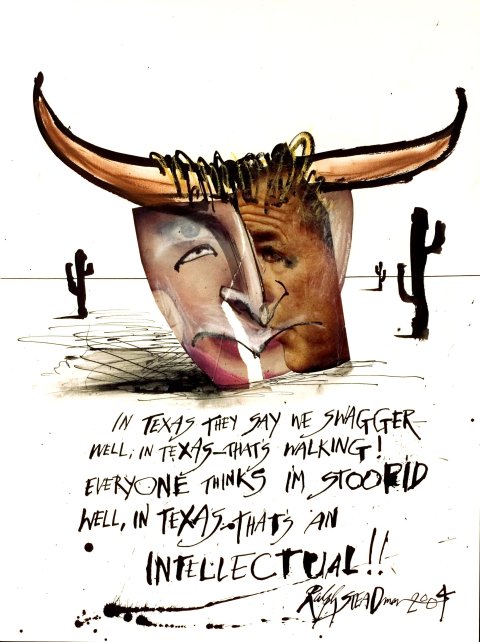
Steadman's artistic range is such that it would be unfair to describe him simply as an illustrator or cartoonist. He is, as his friend Bruce Robinson, director of Withnail and I and The Rum Diary told me, "A supremely talented artist. I feel it is a privilege to know him, because at his best he has the power of fucking Goya. I mean that. There is no one else in his league that I know of."
Steadman's own satirical targets have tended to be men abusing positions of power, and consequently very different people from the Charlie Hebdo assassins, who came from the class commonly described as the urban dispossessed, and who would undoubtedly have experience of scorn and racism.
"I am quite sure that people must have treated them like shit," Steadman says. "But I also think they were bullies, in not so different a way than certain politicians. Think of the mechanics of the killing. They call out the names, perhaps with those terrible pauses you get in reality shows. 'And the contestant leaving us today is . . .' I hope those deaths were quick, but in the minds of the killers it was probably the slower the better. I imagine they would have preferred to use a single shotgun, which required careful reloading each time, or a chainsaw. I think they were seeking to produce a very particular kind of shock."
In many ways, Steadman argues, "I think that terrorists and some political leaders share a similar mindset, in that they consider themselves to be believers. They are devoted to a cause and they'll go to any lengths to uphold their chosen position. They are not completely stable, as the word is usually understood."
"So you can see a kind of similarity between terrorist operations and the rationale that led to the excursions to Vietnam or Afghanistan?"
"I can, and a big part of it is that sense of pride. Once they start the war, or the mission, they feel they can't stop. That would mean losing face. In the Rue Nicolas Appert they tried to give the whole thing a veneer of organisation by calling out the names, the death list, which must have been rehearsed. These are people who obviously have no sense of humour."
"It would be interesting to know what they would have laughed at."
"The helpless, the broken and the lame," Steadman replies. "Bullies. That is what they were."
"There's an odd confluence in all this: what these murderers represented was everything you have opposed all your life, and their victims were working, broadly speaking, in the same trade that you practice."
"And killers express their desires with blood. Very often my ink has the appearance of splattered blood. It's a recurrent theme; I don't know why."
Steadman's thoughts turn to the probable backlash against the wider Islamic community in France, once the prevailing spirit of national unity begins to dissolve, and the extreme right identifies the resulting tension as a commodity.
"Not that these two brothers were religious," Steadman says. "Who could argue that they were devout? My own view of all religion is that, if it brings people comfort, why deprive them of it? But I do think that, with certain people, belief can pervert morality."
"You were close to Kurt Vonnegut – didn't he once say that the only proof he required for the existence of God was music?"
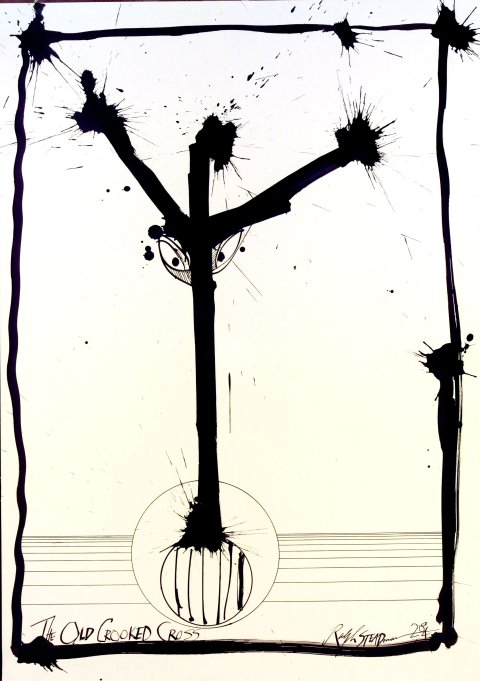
"He also said that life is no way to treat an animal. And I think I know what Kurt Vonnegut would have said about all this, and not in an uncaring way: 'So it goes'. Meaning that, very sadly, these things happen. My father was in the first war and it was a hideous bloody affair. But of course those in that war, broadly speaking, never wanted to shoot. They were ordered. By some poncey bloody general, or Duke."
Would it be absurd to ask whether any good might come out of the events of 7 January?
"The only thing that you could possibly say that has not been entirely negative in this affair is that it hasn't half provoked a lot of discussion. Moral turpitude is high on the agenda. People are questioning their own stance on a whole range of things in a way that they might not have done previously."
"I didn't come here meaning to quote my own work," I tell Steadman, "but there is a psychopathic character in one of my books who is described as dangerous 'because he believed that the pen was mightier than the sword, but didn't always have a pen to hand'. People all over the world, on the streets and on social media, are finding all kinds of visual ways to rework that old proverb. These shootings could place cartoonists at the heart of contemporary conflict rather in the way that poetry became the most important form of artistic expression in the First World War."
"Or in the Spanish Civil War. I think that's very possible. It's also possible that, in some people's minds, becoming a cartoonist might seem like a heroic thing to do. Either heroic or suicidal."
"You'll know that Peter Cook once joked about the way that all of those satirical night clubs in 1930s Berlin 'did so much to prevent the rise of Adolf Hitler'. Can all of these new cartoons have any effect?"
"I think – I know – that satire does frighten fascists. Fascists don't like satire. They don't like it at all. And they especially don't enjoy visual satire. Because of its unique power to communicate. As Wittgenstein [Ludwig] asserted, the only thing of value is the thing you cannot say. Sometimes you can't communicate the idea or the emotion, but a drawing can. You draw something, and people say: 'Oh, I see what you're getting at now'." And that thought, Steadman says, "brings us back to what happened in that room at Charlie Hebdo. Some things," he adds, "there are no words for".



